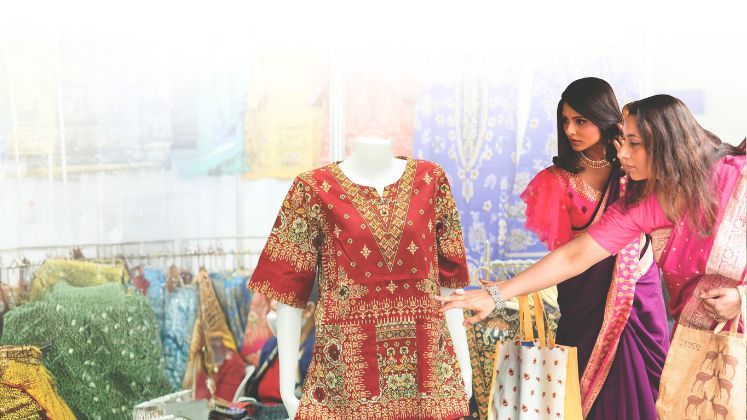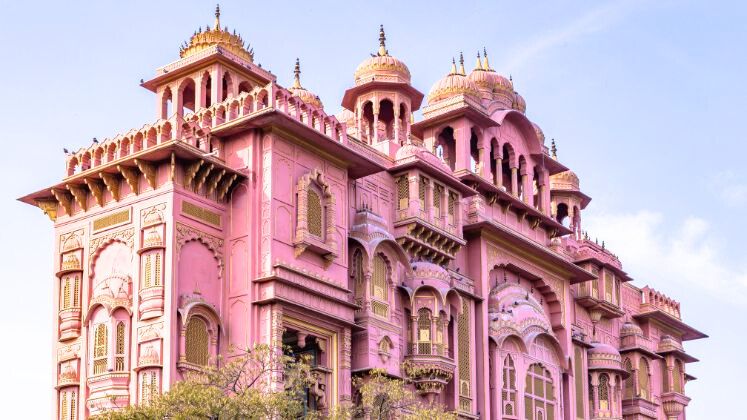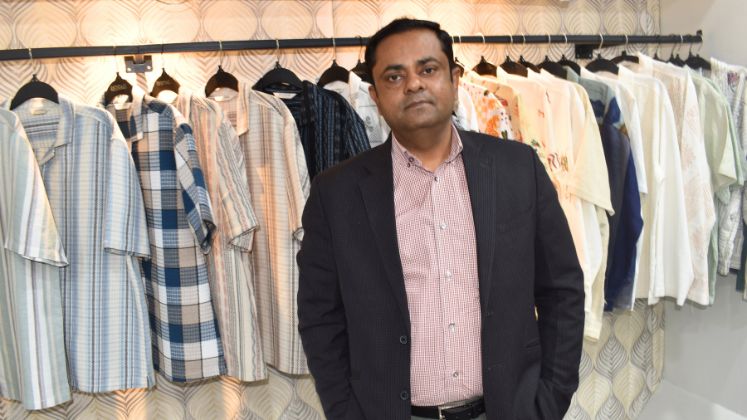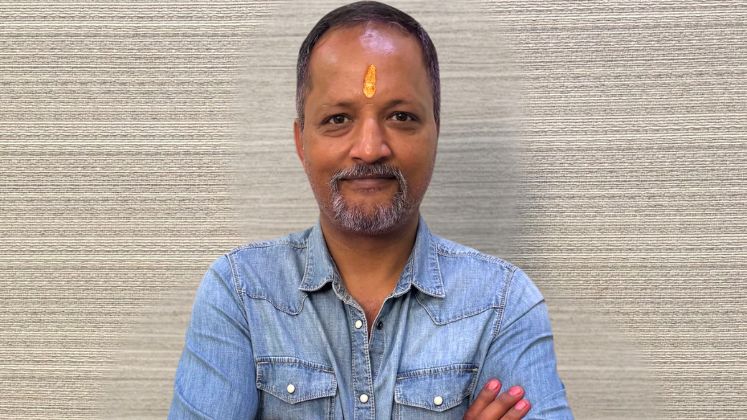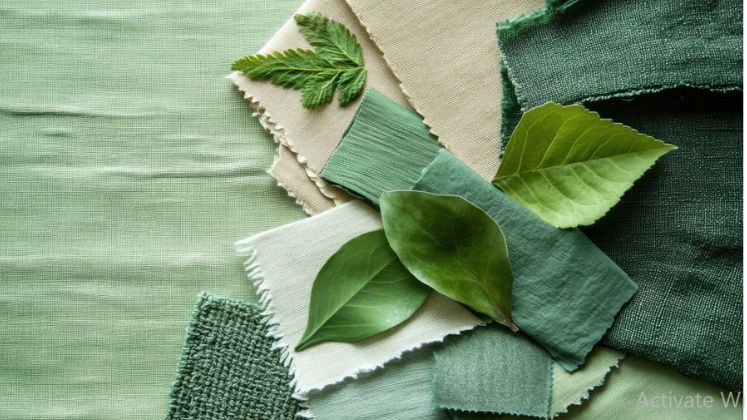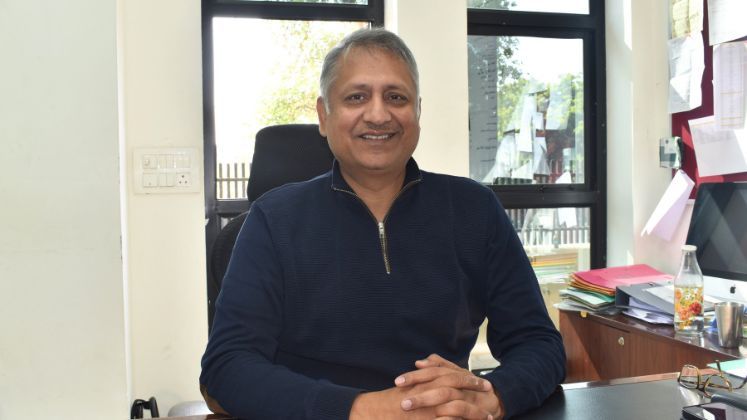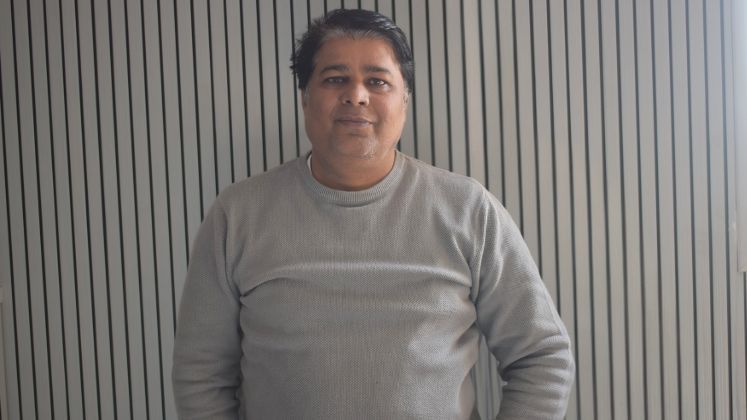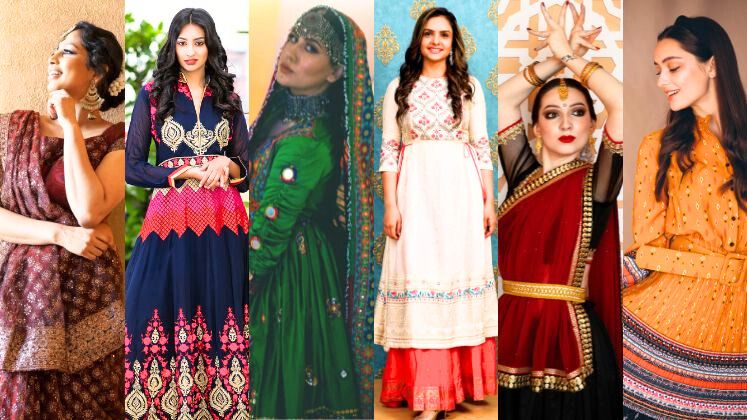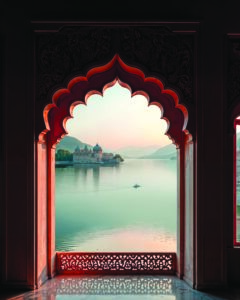 Rajasthan, the desert state, is stirring up a storm—not of sand, but of opportunities in the textile and apparel industry! For the first time, the state has made garment manufacturing a key part of its new textile policy, aiming to attract Rs. 10,000 crore (US $ 1.14 billion) in investment.
Rajasthan, the desert state, is stirring up a storm—not of sand, but of opportunities in the textile and apparel industry! For the first time, the state has made garment manufacturing a key part of its new textile policy, aiming to attract Rs. 10,000 crore (US $ 1.14 billion) in investment.
Under the new policy, Rajasthan is offering various benefits, including investment and capital subsidies, incentives linked to turnover and job creation bonuses. Companies will also get flexible land payment options, tax refunds and support for setting up essential facilities. Plus, there are subsidies for electricity, green solutions, freight and intellectual property rights (IPR).
The state is also planning private industrial parks for textile and apparel manufacturing under the Rajasthan Private Industrial Park Scheme 2025, apart from setting aside land for logistics in new industrial zones.
Rajasthan already has a strong textile base with four major clusters—Bhilwara, Jaipur, Pali and Balotra. It ranks fourth in cotton production, dominates India’s Poly Viscose suiting market with 70 per cent production and is one of the top producers of denim and apparel.
The north-western state is famous for traditional textiles like bandhani, leheriya, kota doriya, applique and block printing.
Rajasthan also offers good connectivity. It is close to big ports like JNPT in Maharashtra and Kandla and Mundra in Gujarat. The state shares borders with five major states and is near Delhi. It also has India’s second largest railway network, the third largest national highway network and seven international and domestic airports.
And to keep Rajasthan’s textile industry in the pink of health, Jaipur plays a crucial role. The Pink City alone does around Rs. 10,000 crore of annual business and is home to over 400 textile and apparel manufacturers. About 200 of them are exporters with a turnover of Rs. 3,000 crore. The domestic market contributes around Rs. 6,000 crore, while the rest comes from home textiles and fabric sales.
Experts say that Jaipur is almost seven per cent more cost-effective than Delhi-NCR and is flexible in handling both export and domestic markets simultaneously. The city is also a hub for block printing.
To provide you deeper insights, Apparel Resources recently visited this vibrant textile and apparel hub. Here’s a report:
High hopes pinned on domestic market
Manufacturers catering to the domestic market have pinned high hopes on its growth potential, given India’s positive growth trajectory projected for the future.
“Big brands like Reliance, Tata Zudio, Max and Pantaloons are all buying more from Jaipur. Now, around 40-50 per cent of manufacturers in Jaipur focus on the Indian market. These brands also ensure that payments usually come within 45 days as per MSME guidelines,” said Arif Kagzi, President of AGES (Association of Garment Exporters Sitapura) and Director, Kagzi Exports. His company, with over Rs. 100 crore in revenue, serves both domestic and international brands across North America, Europe, the UAE and the Far East, specialising in woven apparel for women, men and kids. Kagzi Exports has a production capacity of 2,00,000 garments per month.
“The economy in major markets like the US and Europe is growing slower than in India and China, leading to reduced consumer spending. Meanwhile, India’s domestic market is gaining strength,” said Navneet Saraf, MD of India Image.
The company specialises in high-fashion clothing for women, men and children, along with textile-made products. With a production capacity of 75,000 pieces per month, India Image focuses entirely on the domestic market. Some of its major clients include Landmark Group and Shoppers Stop.
Sharing similar sentiments, Anupam Arya, Co-founder and VP – Marcom and Strategy, Fabriclore, a tech-enabled fabric customisation and sourcing platform for fashion businesses worldwide, pointed out, “The private label market has exploded, and in our internal database, we have a list of more than 8,000 private labels in India. Every month, we receive around 400 inquiries for fabric sourcing, many of them new, though some are repeat customers.”
Their platform connects over 30 mills, printers and dyers, offering in-house design, quality inspection, testing and a 10,000 sq. ft. fulfilment centre. The company, backed by private equity and angel investors, including PeerCapital, Regal, Rajasthan Venture Capital Fund and Fluid Ventures, provides the option for minimum order quantities (MOQs), starting at just 100 metres.
While Jaipur is well known for block printing, Anupam stressed that there are only a few suppliers for digital printing. Most digital printing is done in Surat and Ahmedabad. Suppliers are chosen based on their expertise—some are skilled in printing on viscose or cotton, while others specialise in polyester.
Another key player of Jaipur industry, Naveen N Banura, MD, MN Fashions, who leads the Rs. 100 crore company dealing in tunic wholesale for the domestic market, also expressed confidence in the domestic market. He shared that his team of 65 serves 8,200 retailers across India and launches around 150 exclusive designs every week.
| “The export market has been going through ups and downs for a long time, but finally stabilised in 2025. Maybe around Diwali, as we plan for next summer, we’ll look at expanding. ”Rajiv Dewan, CEO, Ma’am Arts |
Exports remain stagnant
Manufacturers lamented that Jaipur’s export share has remained stagnant over the years and the decline in exports to Europe and South America has made matters worse.
Buyers now compare prices with manufacturers from Bangladesh, China, Vietnam and Mexico. Strict shipping commitments add to the pressure—if shipments are delayed, penalties can erase all profits.
One major challenge is fabric processing. Rajasthan does not have professional mills, so exporters buy fabric from Erode or Bhiwandi, which takes about seven days to arrive. Then, the fabric is sent to Ahmedabad for processing, adding another 30 days due to quality checks. This means fabric processing alone takes 40-50 days before sewing and shipping can start, often causing delivery delays.
Bhilwara, located around 250 kilometres from Jaipur, produces cotton-spun and poly-spun fabrics. However, exporters primarily need 100 per cent cotton, polyester or viscose.
“The export market has been going through ups and downs for a long time, but finally stabilised in 2025. Maybe around Diwali, as we plan for next summer, we’ll look at expanding,” said Rajiv Dewan, CEO, Ma’am Arts, a government-recognised STAR export house in Jaipur. The company runs 1,000 sewing machines and produces over 2.5 lakh garments every month. It has strong partnerships in 27 countries, including Australia, France, Europe and Japan.
“Exports were more attractive 10-15 years ago because manufacturers received higher incentives. Back then, we had 8-8.5 per cent drawback, along with advanced licenses and other benefits totalling around 12 per cent. Now, these benefits have dropped to just 4 per cent, making exports less profitable,” rued Arif Kagzi.
He also pointed out that attending trade fairs in the US, Europe or Japan costs around Rs. 6-7 lakh. Earlier, exporters could cover this cost using incentives, but now, with shrinking profits, it has become difficult.
“Our cut-to-pack cost is about US $ 1.20 per garment, while Bangladesh can do it for just 70-80 cents,” he added.
“About 90 per cent of our revenue comes from exports, and overall, it has gone down, especially in online retail, which has been struggling worldwide. The US elections have also had an impact and European customers are buying less due to rising commodity prices, especially because of the Ukraine and Israel wars,” commented Harshit Kumar, MD, Alacrity Exports, a manufacturer and exporter of apparel and home textiles.
Previously, it worked with brands like Target, Walmart and Li & Fung, but now it prioritises quality over quantity. It now uses high-end fabrics like linen, cotton and natural fibres instead of rayon and viscose, incorporating Indian handcrafted techniques that appeal to global markets.
Japan and the US each contribute 37.5 per cent of their revenue, Europe 20 per cent and New Zealand and the UK contribute 5 per cent each. Currently, Alacrity Exports produces around 3,000 garments per year for each customer, with each piece valued at Rs. 8,000-Rs. 9,000.
It specialises in traditional Indian crafts such as kantha embroidery, beadwork from western Uttar Pradesh and intricate sequin work. The company directly employs 400 women artisans from Bengal, particularly from the remote areas.
While Indian heritage is known for vibrant colours, global markets prefer muted tones. To cater to this demand, Alacrity Exports adopts block printing, screen printing and lesser-known techniques like mud print and mud dyeing.
This approach has been especially successful in Europe, where it has also introduced linen napkins and table covers featuring traditional crafts. Currently, the company’s business is evenly divided between apparel and home décor, with both growing at the same pace.
Experts say that potential markets like Japan have been difficult to crack. Jaipur, however, has a few good manufacturers that cater to the Japanese market.
“Buyers, especially brands, have raised their quality standards significantly and with the yen weakening, price has become the top priority. While we can control the manufacturing quality in our factories, we struggle with quality control for vendors, especially for printing, dyeing and accessories,” explained Aseem Singla, Owner, Fashion Images Overseas, an exporter with two factories focused mainly on the Japanese high end market.
Another big challenge is the drop in order sizes. Japanese high-end brands now request as few as 50 to 100 pieces per order, making it very difficult to maintain high-quality standards throughout production as it’s very difficult to convince supply chain vendors to accept smaller quantities.
“This isn’t just an issue in Japan; other countries are also facing similar challenges as well. Workers also prefer working on larger orders. For example, stitching tailors would rather work on one style in bulk, even if the payment is slightly lower, instead of switching styles frequently,” said Aseem Singla.
He also pointed out that workers are becoming less focused on their tasks, which is another growing concern.
Despite challenges, Rakshit Poddar, Director, Cheer Sagar Exports and President, Garment Exporters Association of Rajasthan (GEAR), spoke about the great potential of Jaipur’s exporters.
“Jaipur’s handcrafted garments have immense potential in Europe, the US, South America, Australia and the Middle East. There is increasing demand for sustainable, handmade, bespoke ethnicwear and artisanal fashion,” he said.
“Traditionally, womenswear has dominated Jaipur’s garment exports, but the men’s segment is now seeing strong growth, especially for wedding and festive collections. The fusion of ethnic and formal styles is also emerging as a new trend, offering Jaipur-based players an opportunity to enter the workwear market,” he added.
Cheer Sagar Exports is a leading manufacturer of woven garments for women and kids as well as high-quality home furnishings like cushion covers, bedspreads, quilts, bags, accessories and footwear. It mainly exports to South America, Japan and Europe.
| Big brands like Reliance, Tata Zudio, Max and Pantaloons are all buying more from Jaipur. Now, around 40-50 per cent of manufacturers in Jaipur focus on the Indian market. These brands also ensure that payments usually come within 45 days as per MSME guidelines. – Arif Kagzi, Director, Kagzi Exports |
| The economy in major markets like the US and Europe is growing slower than in India and China, leading to reduced consumer spending. Meanwhile, India’s domestic market is gaining strength. Navneet Saraf, MD, India Image |
| Jaipur’s handcrafted garments have immense potential in Europe, the US, South America, Australia and the Middle East. There is increasing demand for sustainable, handmade, bespoke ethnicwear and artisanal fashion. Rakshit Poddar, Director, Cheer Sagar Exports |
Balancing growth and sustainability
Despite the challenges, businesses are focusing on expansion to drive growth rather than merely reacting to obstacles. For instance, plans are underway to establish a dedicated garment production zone in Chaksu, a municipality in Jaipur district. As part of this plan, a Rs. 150 crore MoU has been signed with the Rajasthan government under the Rising Rajasthan initiative.
“We have requested land for this setup and new expansions are in the pipeline. Chaksu is an ideal choice due to its readily available workforce,” said Arif Kagzi.
To address the shortage of skilled mid-level employees in areas like merchandising and designing, AGES has set up a training centre in Sitapura. It provides two types of training – one for labourers in sewing and finishing; and another for quality and merchandising.
Rakshit Poddar also highlighted that GEAR is working closely with the Rajasthan government to ensure dedicated policies that support Jaipur’s garment industry, including ODOP (One District, One Product) recognition.
Even Alacrity Exports is planning to expand, particularly in the dyeing unit, over the next two to three years.
“We initially had our own dyeing facility but later outsourced it. However, with the growing emphasis on sustainability, we are considering bringing it back in-house. Additionally, we are exploring the possibility of setting up a printing centre, which would include a water treatment plant to address the significant pollution generated by textile production,” explained Harshit Kumar.
Experts argued that sustainability can be a key competitive advantage for India’s exports, despite some infrastructure and support challenges.
Speaking about future plans for India Image, Navneet Saraf shared, “You might soon see a collection of hand-printed fabrics made with organic colours—everything crafted without chemicals. Naturally, handmade and chemical-free products come at a higher cost, but I’m working behind the scenes to make them more affordable. My goal is to transition entirely to sustainable production while maintaining my current scale.”
He added, “I believe Rajasthan will become the number one producer of woven garments in the next 10 years.”
Echoing this focus on sustainability, Rajendra Bhatia, Managing Director, India Today Fashions, a star export house specialising in womenswear with a production capacity of up to 200,000 pieces per month, shared, “We are already working on sustainable and recycled fabrics, including hemp, hemp-cotton and hemp-modal blends. We are also developing samples and our buyers are responding positively as they are also focusing on sustainability.”
Over the next two years, Jaipur is expected to see at least 10 fully integrated units being set up in the city, handling everything from manufacturing to printing. The biggest factor here is logistics—reducing transportation costs makes operations more sustainable.
Having said that, pollution is still a big problem. In February, the commercial court in Jaipur ordered the closure of 800 textile factories in Sanganer, south of Jaipur. The court gave this order after a company responsible for setting up a Common effluent treatment plant (CETP) filed a petition.
The company complained that the state government had not paid the required compensation under the ‘Polluter Pays’ rule. The court told the government to pay the company first and later collect the money from the factory owners.
If the payment is not made within three months, the court will seize the movable and immovable assets of the factory owners.
Experts say most of these 800 factories are small-scale and operate in the unorganised sector, often seeking cost-effective alternatives to fabric printing rather than sending materials to Surat or Ahmedabad.
Going forward, with traceability becoming crucial and sustainability laws getting stricter, companies that fail to adapt will either shut down or be left behind in the race.
| Growth vs. Green Concerns
Over the next two years, Jaipur is expected to see at least 10 fully integrated units being set up in the city, handling everything from manufacturing to printing. Having said that, pollution is still a big problem. In February, the commercial court in Jaipur ordered the closure of 800 textile factories in Sanganer, south of Jaipur. |
| We are already working on sustainable and recycled fabrics, including hemp, hemp-cotton and hemp-modal blends. We are also developing samples and our buyers are responding positively as they are also focusing on sustainability. Rajendra Bhatia, MD, India Today Fashions LLP |
| Buyers have raised their quality standards significantly and with the yen weakening, price has become the top priority. While we can control the quality in our factories, we struggle with quality control for vendors. Aseem Singla, Director, Fashion Images Overseas |
| Unlike many others, we manage our entire manufacturing process in-house. Stitching, dressmaking, finishing, embroidery, handwork, colour matching, dyeing and printing—all are done within our own facilities. Ramavtar, Director, MK Tailoring House |
Jaipur’s rising fashion brands
Jaipur’s fashion scene has evolved beyond block prints and gota work. A new generation of designers are blending traditional fabrics with modern styles, creating fresh and unique looks.
Some of the brands and labels emerging from Jaipur include Picchika, Karo, Khajoor Studio, Iro Iro, Pana Mina, Punit Balana, Studio Kassa, The PDKF Store, HeenaAgrima, Gulaal, House of Mae, Rias Jaipur, Vrisa, Ragavi and Rama’s.
Rakshit Poddar stated that e-commerce has transformed Jaipur’s garment industry, allowing even small manufacturers to reach national and international customers without the need for expensive retail spaces.
“Many businesses are also leveraging social commerce and their own D2C websites to build a strong brand presence. The government’s ONDC (Open Network for Digital Commerce) initiative is also expected to provide further opportunities for Jaipur-based manufacturers,” said Rakshit Poddar.
“Our target audience are primarily women aged 25 to 50, mostly from Tier-1 and Tier-2 cities,” said Shreyaa Juneja, Founder, Ragavi.
The online womenswear brand offers vibrant, chic designs starting at Rs. 5,000, using fabrics like cotton, silk, crepe, georgette, kota doria, chanderi, viscose, organza, chiffon, poplin and linen.
Rama’s, a brand of M.K. Tailoring House specialising in Jaipur kurtis and ladies’ garments, is introducing versatile concepts for 2025 that blend officewear, ethnic fashion and festive styles. The brand operates over 10 company-owned outlets and 125 multi-brand stores worldwide.
“Unlike many others, we manage our entire manufacturing process in-house. Stitching, dressmaking, finishing, embroidery, handwork, colour matching, dyeing and printing—all are done within our own facilities,” highlighted Ramavtar, Director, M.K. Tailoring House.
The company manufactures a wide range of ladies’ garments, including straight kurtas, long kurtas, rayon kurtis, georgette kurtis, designer kurtis and printed salwars. It has also collaborated with Westside, Walmart, Myntra, Reliance and House of Pataudi.
With a strong focus on sustainability, the brand prioritises cotton-based products, uses electric power over gas and employs eco-friendly, azo-free dyes.
(With exclusive inputs by Dheeraj Tagra)


